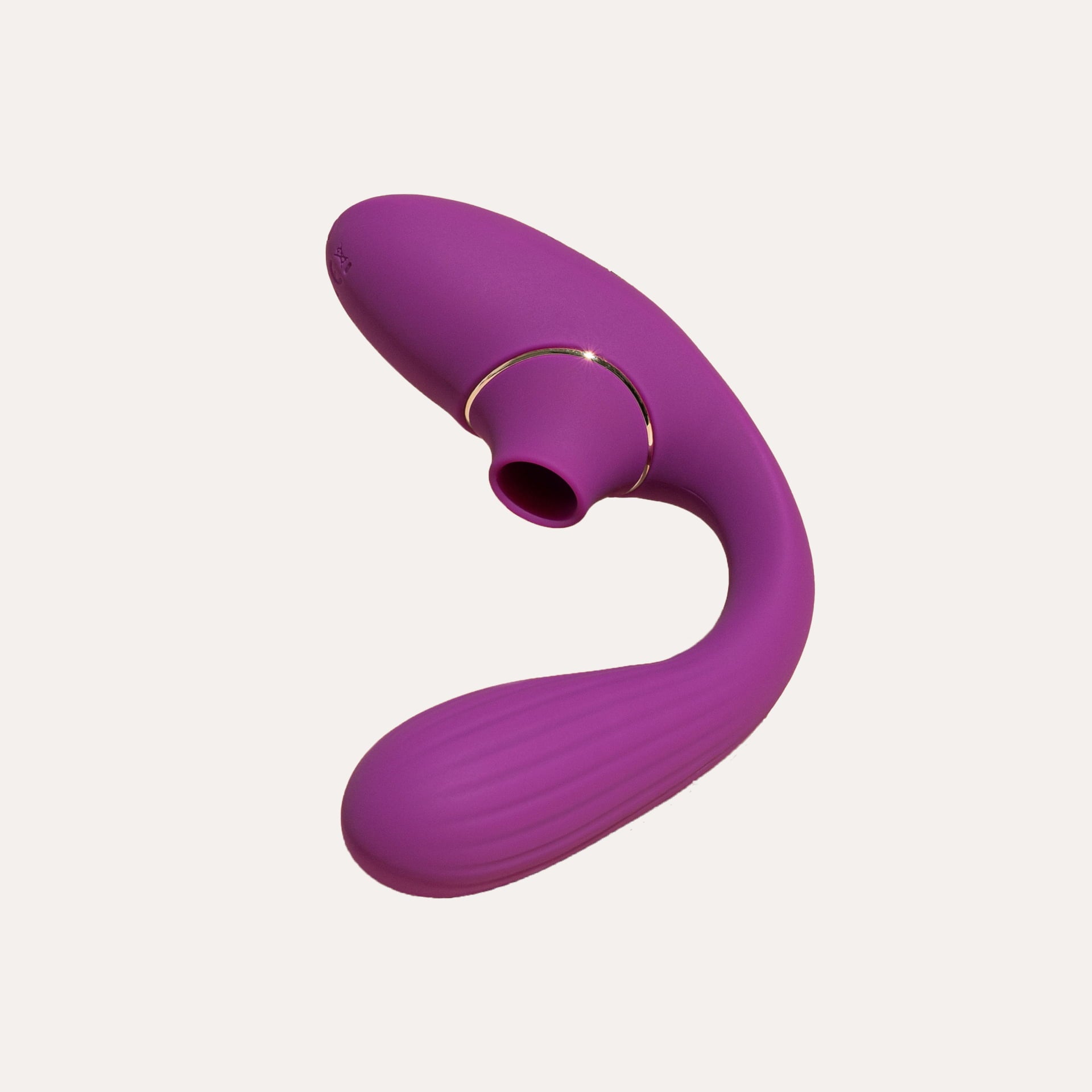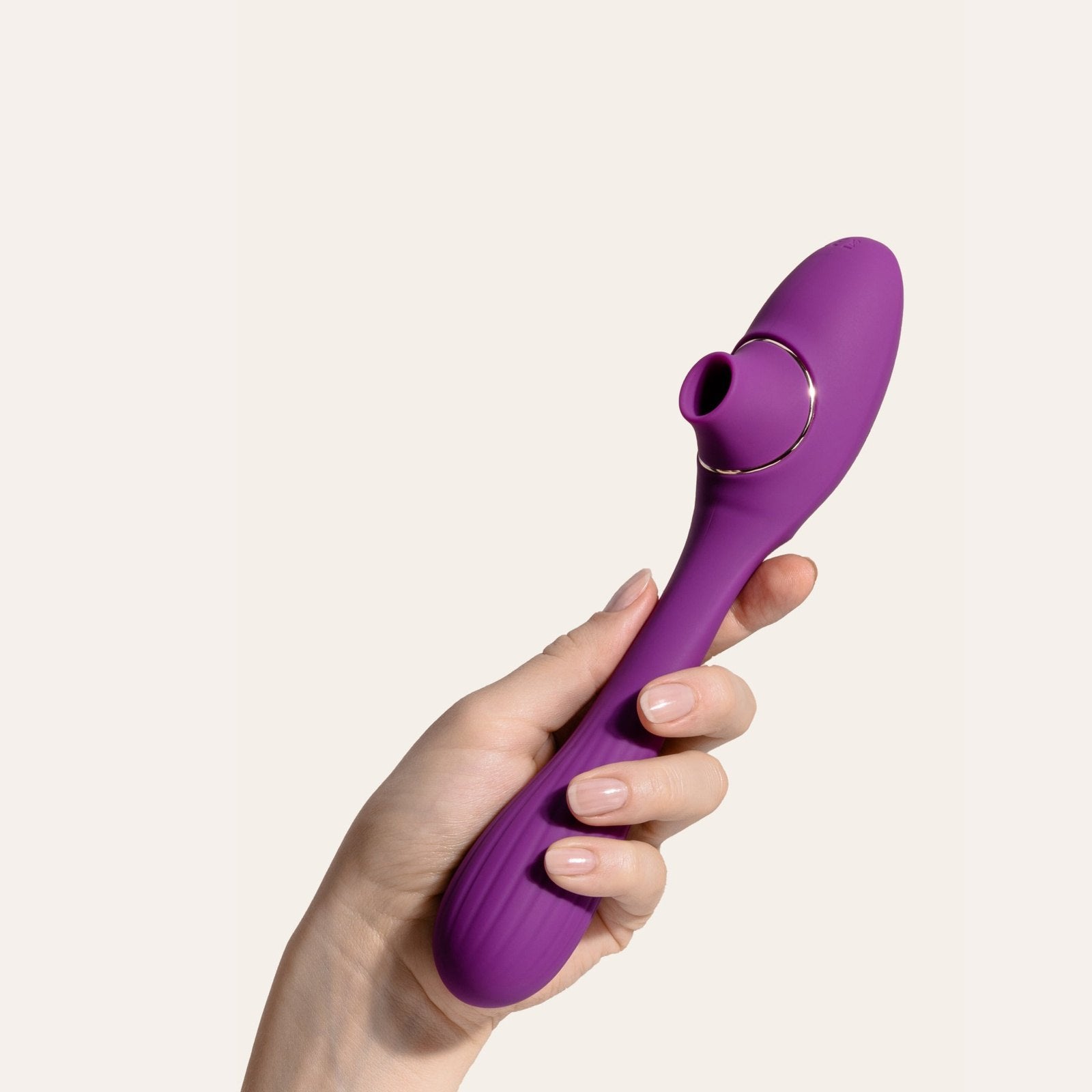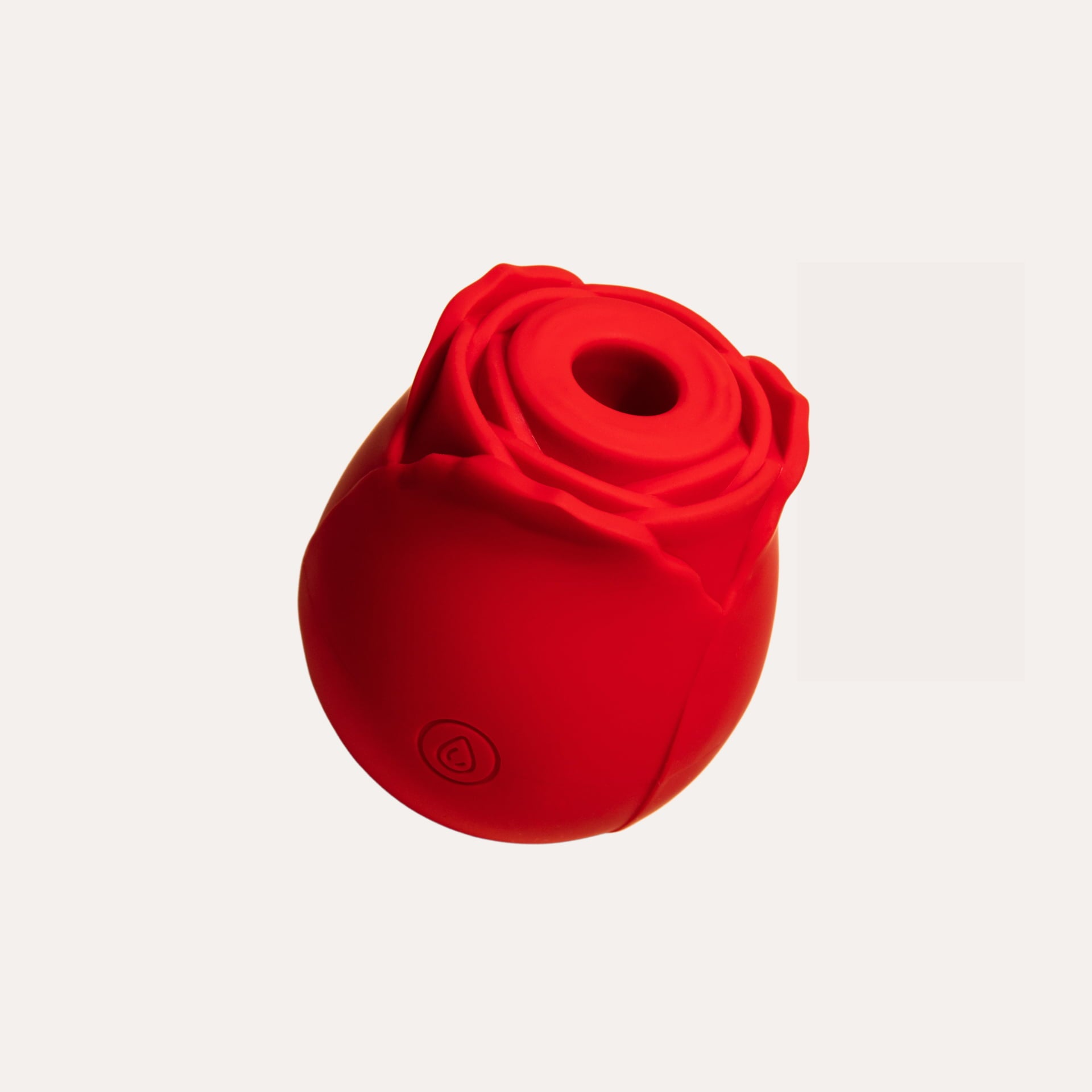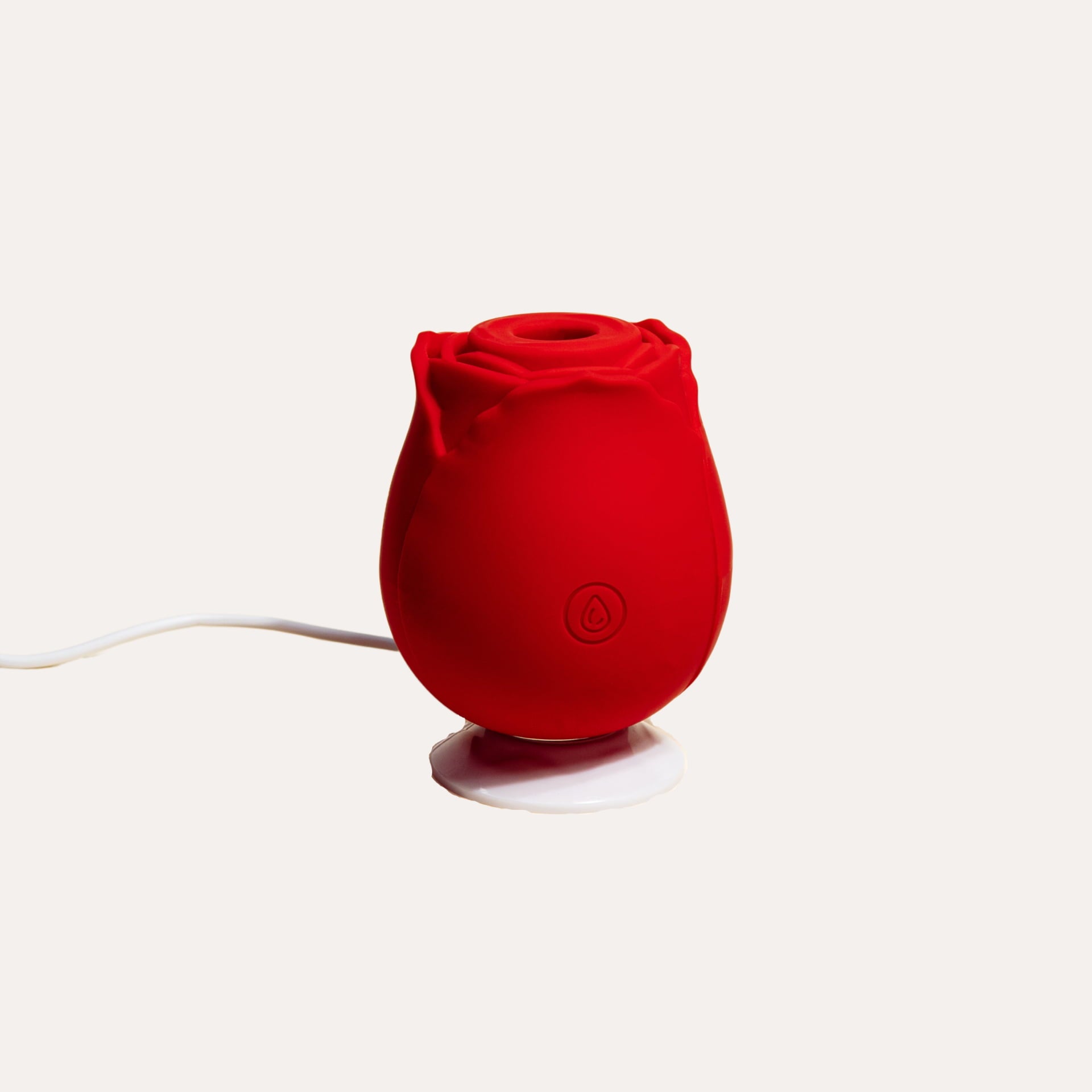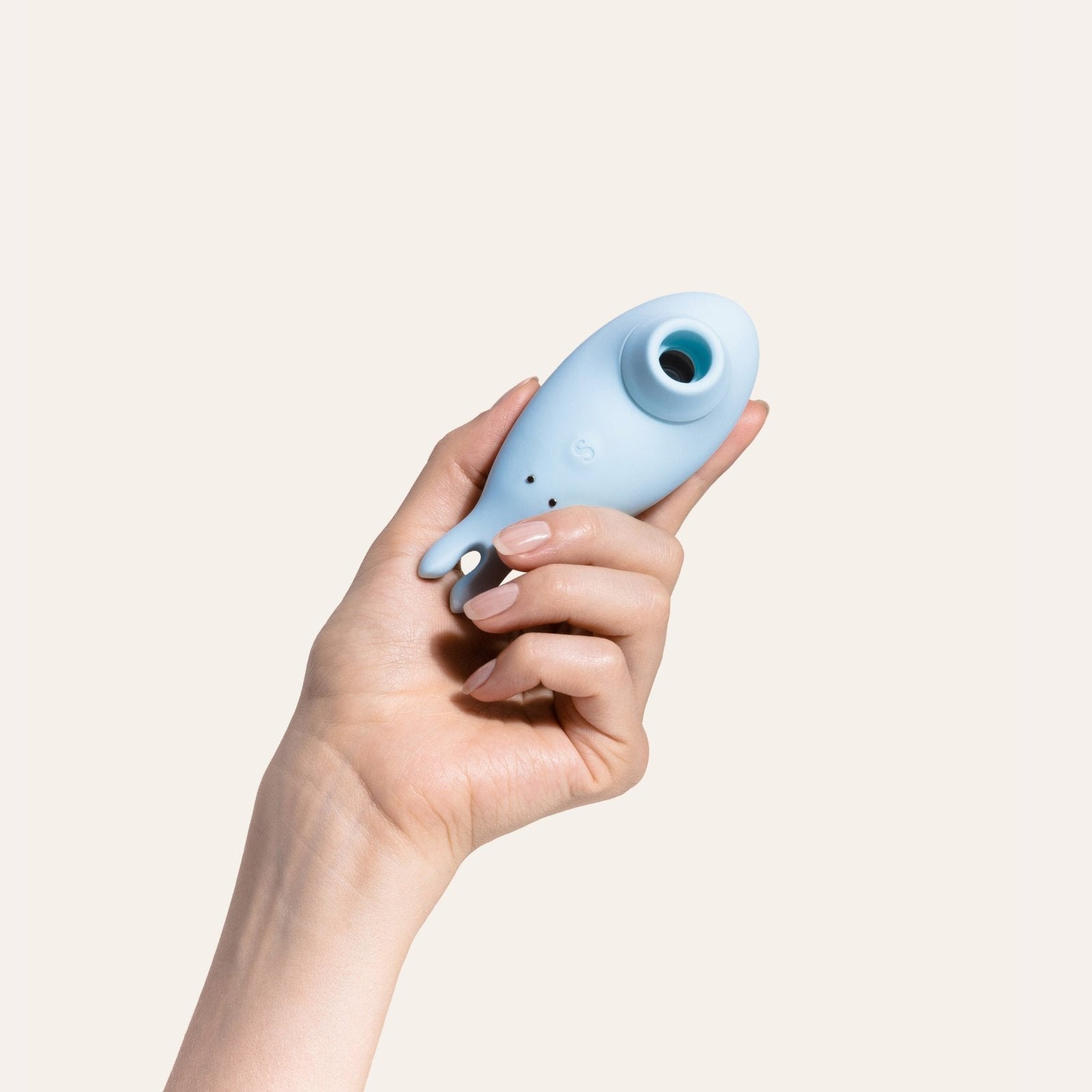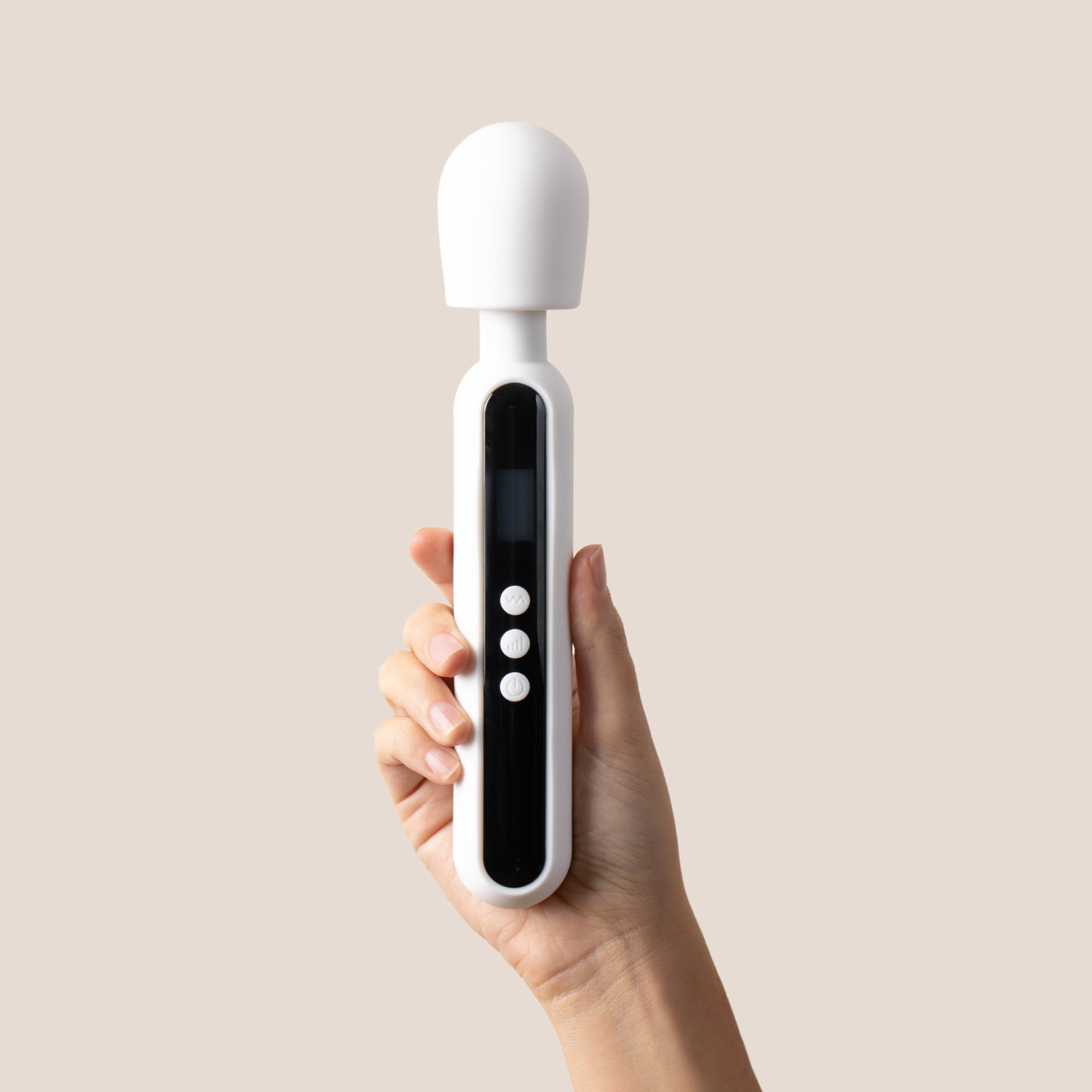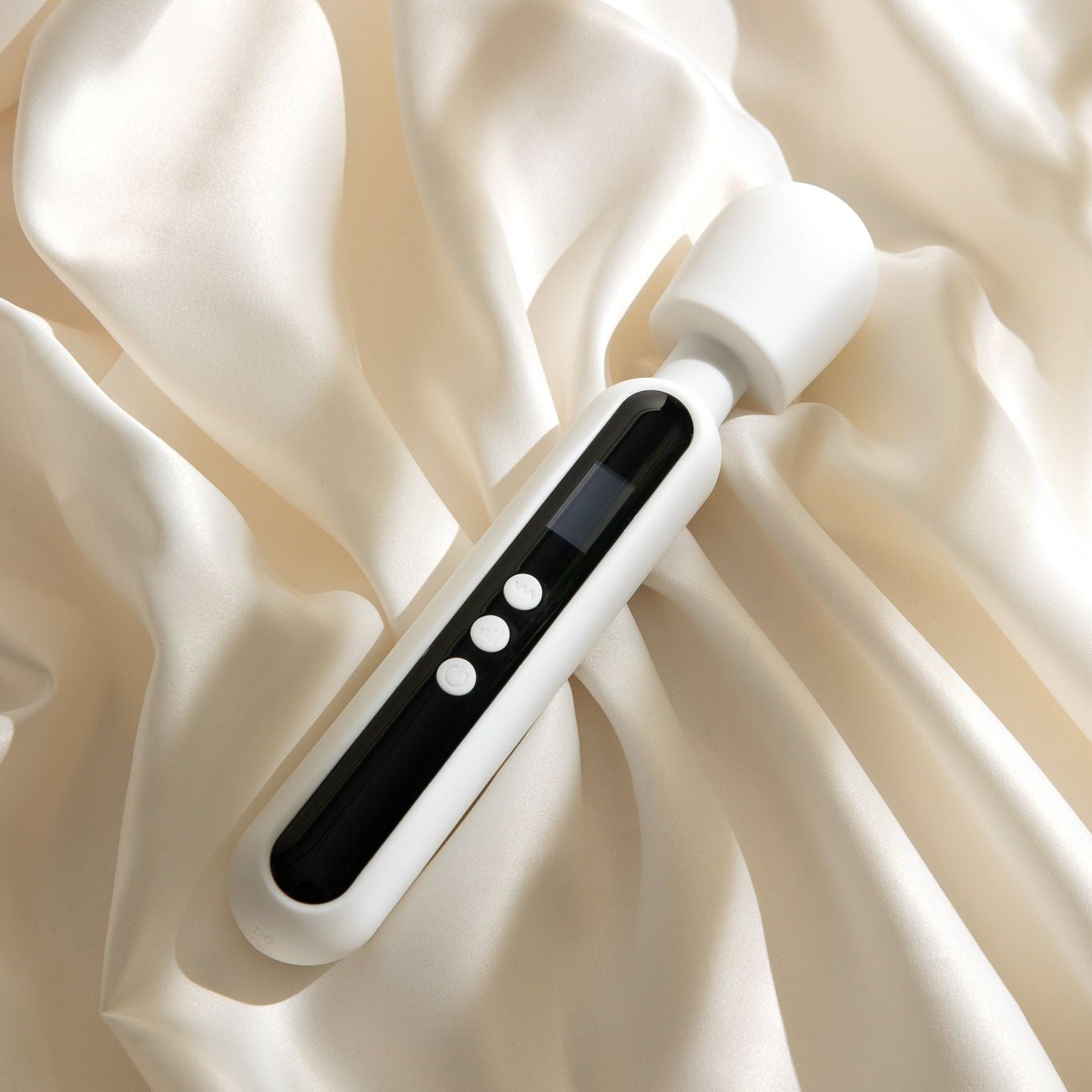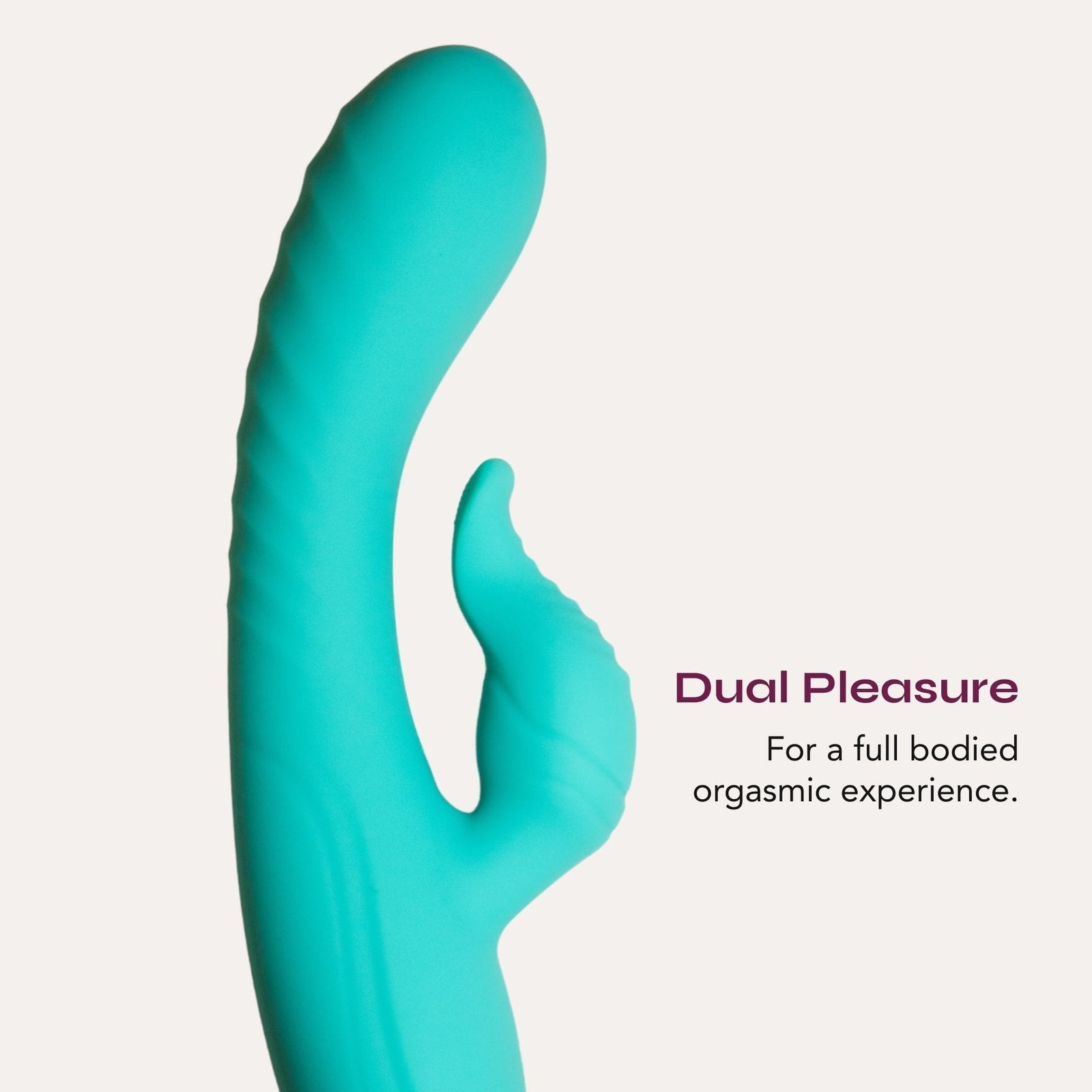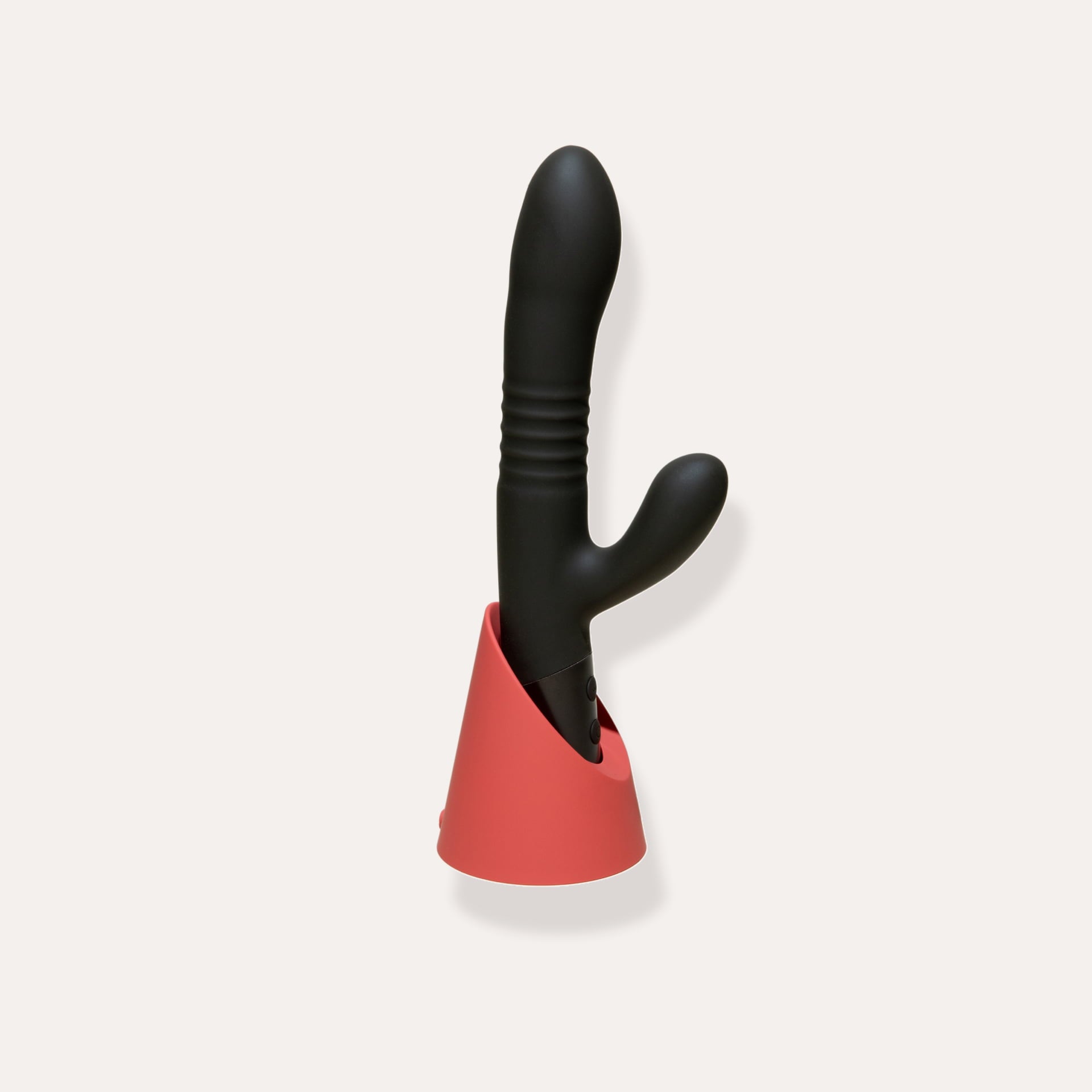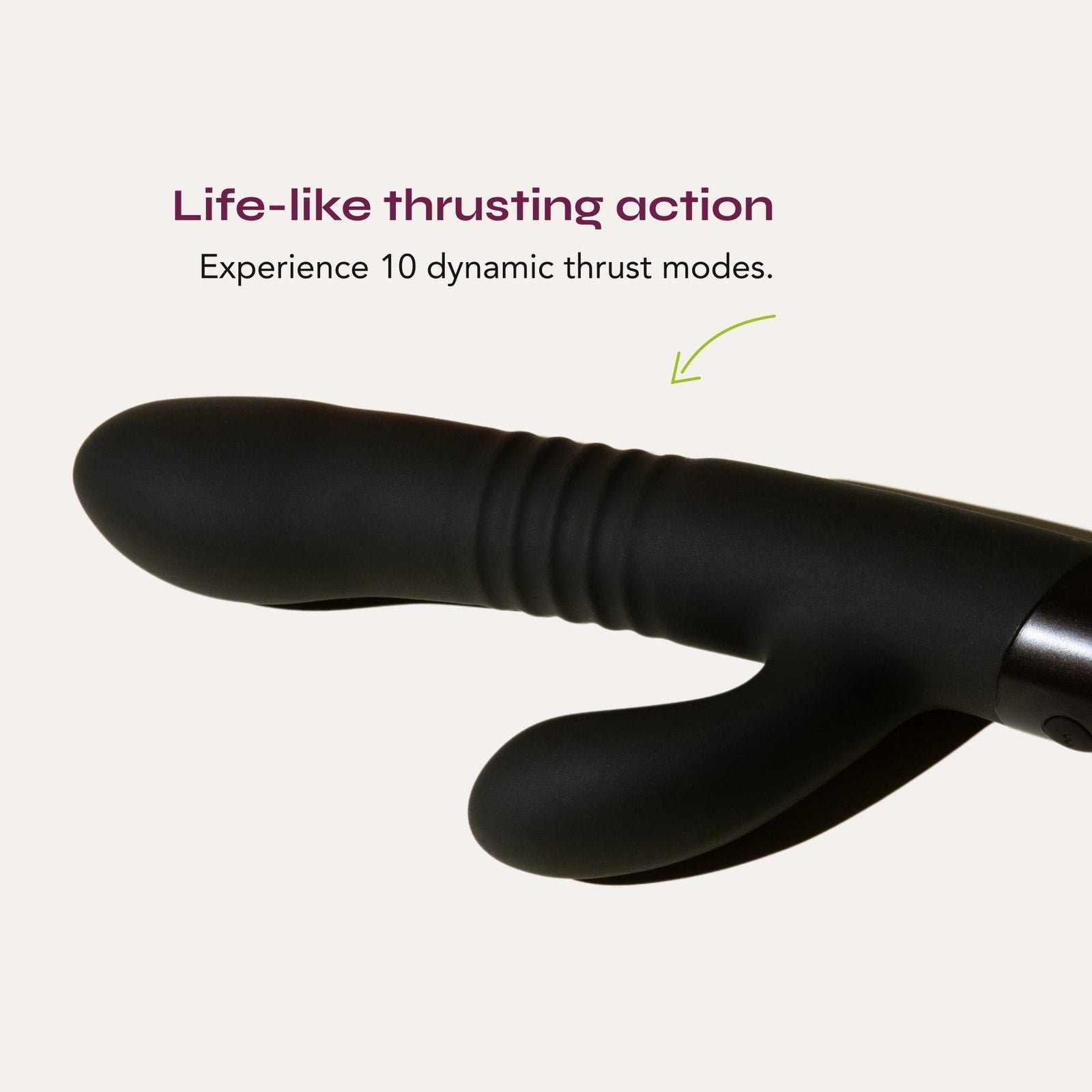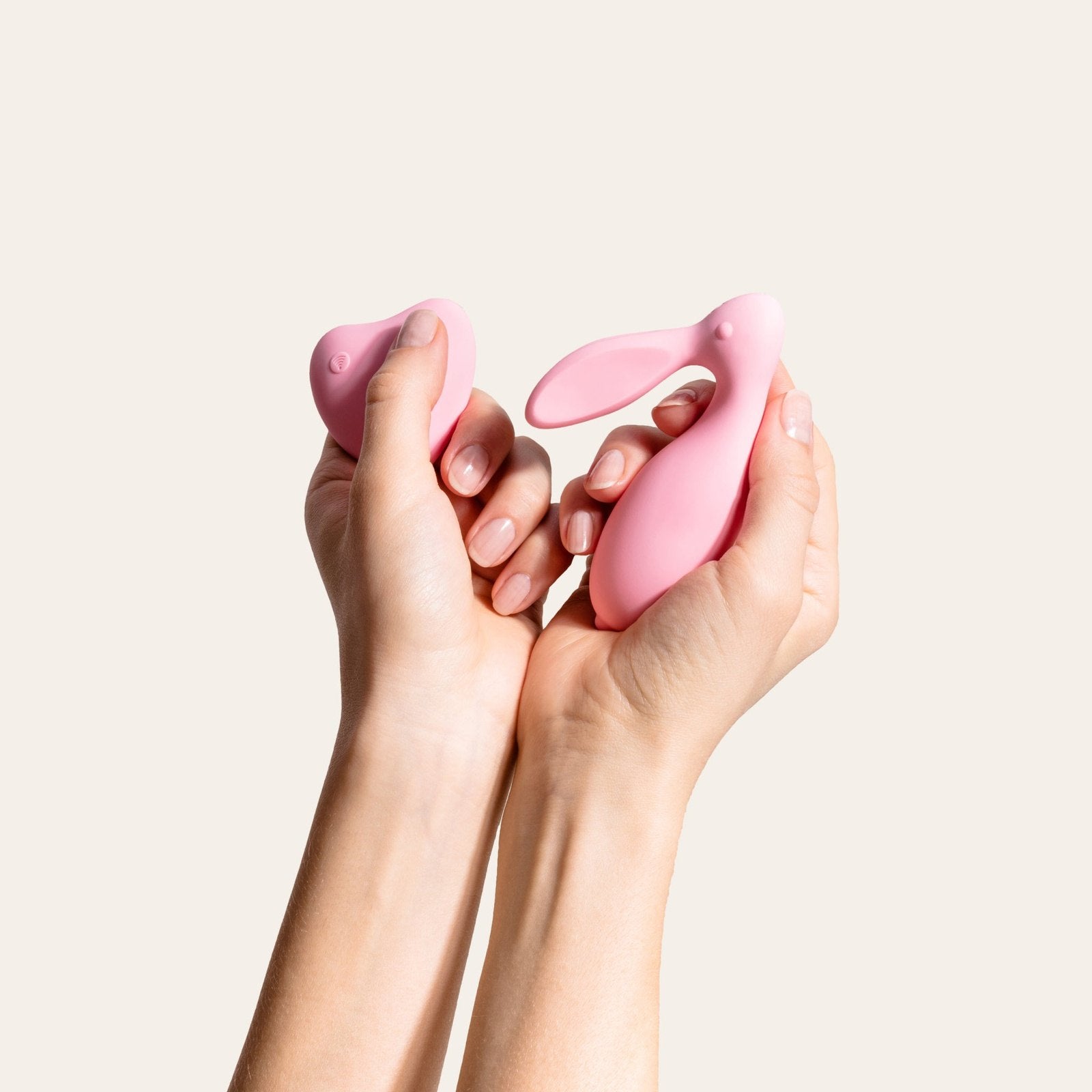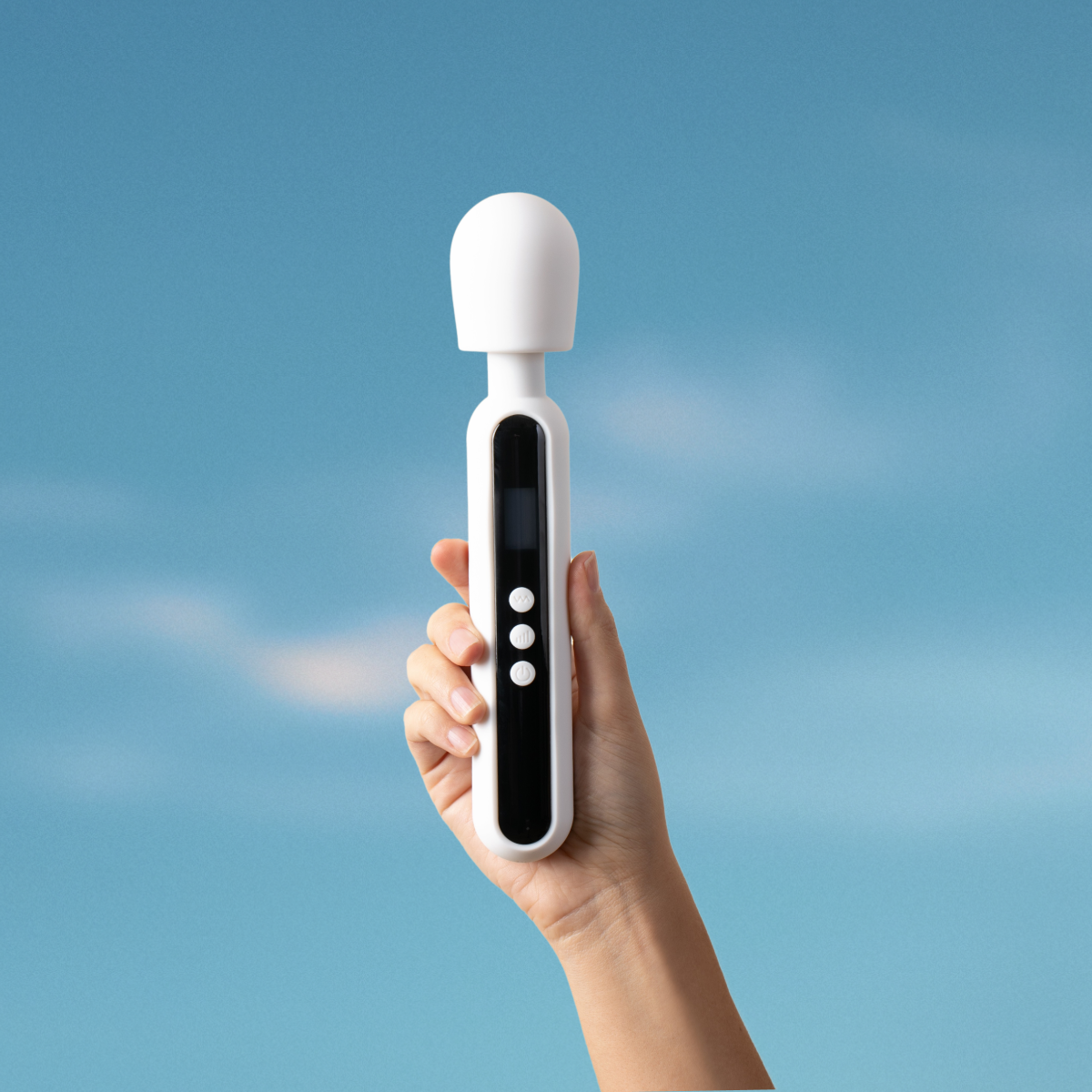Lisa is 56 and dreads her husband's touch lately. Not because she doesn’t love him, but because what used to feel good, now felt like punishment. She'd started making excuses—headaches, exhaustion, anything to avoid the discomfort she couldn't explain.
Sound familiar?
If sex has become something you avoid rather than enjoy, you're not alone.I hear from women all the time who describe the same thing: dryness that makes intimacy painful, burning when they pee, a lack of pleasure during stimulation or just feeling like their body has betrayed them without warning.
The worst part is, most of us suffer in silence.
We assume “it's just what happens” when we age, something we're supposed to grit our teeth and accept. Our doctors don't bring it up, our friends don't talk about it, and we're left googling symptoms at 2 AM wondering if we're falling apart.
There's actually a name for what you may be experiencing. It's called Genitourinary Syndrome of Menopause, and it affects up to 70% of postmenopausal women. You're not imagining it, you're not broken, and you definitely don't have to live with it.
What you're about to read isn't another clinical rundown of symptoms you already know too well.
Instead, I want to share what really works—including some surprisingly simple solutions that don't require a prescription or a doctor's visit. We'll talk about everything from the basics of why this happens to the role of sexual wellness (yes, including masturbation) in keeping your body healthy and responsive to that intimacy and pleasure you’re missing.
Because feeling good in your own skin isn't a luxury, it's your right.
What's Really Happening Down There?
For decades, your body just... worked. You didn't have to think about lubrication or worry about whether sex would hurt. Your vagina was this reliable, resilient part of you that you probably took for granted.
Then menopause happened.
And it’s not just your period (meno) stopping (pause).
It’s. So. Much. More.
What GSM Actually Is
Genitourinary Syndrome of Menopause (GSM) is the medical term for the collection of changes that happen to your vulva, vagina, and urinary system when estrogen levels drop during menopause. It's not just one symptom—it's a whole constellation of changes that affect how these interconnected systems function.
The condition used to be called "vulvovaginal atrophy" or "vaginal atrophy," but those terms were clinical, harsh, and frankly, pretty depressing. The word "atrophy" made it sound like something was wasting away—not exactly encouraging when you're already feeling disconnected from your body.
In 2013, medical experts officially renamed it GSM because the old terms didn't capture the full scope of what women actually experience. It's not just about vaginal tissue "atrophying"—it's about an entire system of your body adapting to hormonal changes.
More importantly, the name change reflected a shift in how we think about this condition. Instead of something that's broken or deteriorating, GSM is now understood as a natural response to hormonal changes, one that can absolutely be addressed and improved.
The Symptoms No One Prepared You For & Why It’s Happening
When your estrogen levels start their nosedive, it's like pulling the rug out from under your entire pelvic region. Think of estrogen as the maintenance crew that's been quietly keeping everything plump, moist, and flexible. When that crew clocks out, things start to break down.
But here's the part nobody explains: estrogen doesn't just keep tissues healthy directly—it's what keeps the blood flowing down there. And blood flow is everything.
It's what brings oxygen and nutrients to your vaginal walls, your vulva, your clitoris.
It's what makes tissue plump and responsive.
Without that steady circulation, it's like trying to keep a garden alive without water.
Your vaginal walls thin out because they're literally starving for the nourishment that blood flow provides. The natural lubrication that used to happen without a second thought? That depends on blood flow too. The stretchy, accommodating tissue that made sex feel good? Now it feels more like delicate skin that tears easily because it's not getting the circulation it needs to stay supple.
And here's what really gets me—even your clitoris, that incredible bundle of 8,000 nerve endings designed purely for pleasure, starts to lose sensitivity. The very organ that's supposed to be your body's gift to yourself becomes harder to awaken. Touch that used to send sparks now feels muted, distant, or sometimes uncomfortably intense in all the wrong ways.
Even your bladder gets cranky, suddenly you're running to the bathroom constantly or dealing with that awful burning sensation when you pee. All because the tissues aren't getting the blood flow they need to function properly.
This is ALL considered as genitourinary syndrome of menopause. Tough right?
GSM Affects Up to 70% of Postmenopausal Women
This happens to nearly 3 out of 4 women after menopause, but somehow we're all stumbling around figuring it out alone. Our mothers didn't warn us. Our doctors often don't bring it up unless we do first. We're left feeling like our bodies have suddenly betrayed us, wondering if this is just our new reality.
But here's what I've learned: it doesn't have to be.
There are ways to work with your body, and some of the most effective solutions are surprisingly simple and completely within your control.
One of them might even be something you've been told to feel ashamed about your whole life. But we're about to flip that script.
Hormonal & Non-Hormonal Options That Actually Help
There’s no one-size-fits-all approach to Genitourinary Syndrome of Menopause, but the good news is there are more options than you’ve probably been told. And you don’t need to suffer in silence while figuring it out.
Hormonal Therapies (HRT)
For many women, localized estrogen therapy in the form of creams, tablets, rings, or inserts can be a game-changer. These treatments restore estrogen directly to vaginal tissues, improving lubrication, thickening the vaginal wall, and increasing elasticity. And because they’re low-dose and stay mostly localized, they tend to come with fewer risks than systemic hormone therapy.
Systemic Hormone Replacement Therapy (HRT) like patches or pills can also help, especially if you’re dealing with other menopausal symptoms like hot flashes or night sweats. But not every woman wants or needs hormones, and that’s okay too.
Non-Hormonal Therapies
Whether you’re not a candidate for hormones, prefer to avoid them, or just want to support your body naturally, there are effective non-hormonal routes as well:
-
Vaginal moisturizers (used regularly, not just during intimacy) can help maintain baseline hydration.
-
Lubricants (especially water-based or silicone-based) reduce friction and discomfort during sex or self-touch.
-
Pelvic floor physical therapy can improve circulation, muscle tone, and even bladder function.
-
Lifestyle factors like hydration, movement, and nutrition also play a surprisingly powerful role in vaginal health.
-
Regular sexual activity and arousal (with a partner or solo) helps keep tissues oxygenated, responsive, and more comfortable. (More on this below!)
The bottom line? You don’t have to grit your teeth and accept discomfort. There are real, evidence-based ways to feel better and they can be tailored to your preferences, health history, and comfort level.
What Your Doctor Probably Didn’t Say: Pleasure Is Medicine
If your first instinct is to just power through (grit your teeth, tough it out). So many of us were raised to ignore discomfort, to minimize our needs, or that our bodies were taboo subjects. Here's a reframe: your body isn’t failing you, it’s asking for care. For nourishment. For circulation. For attention. For pleasure.
What most doctors aren’t telling women (at least not nearly enough) is that one of the most effective, low-intervention ways to support your vaginal and vulvar health isn’t a prescription or a hormone patch.
It’s arousal. It’s regular blood flow.
Consistent, gentle touch that reminds your body how to feel good again.
Yes, we’re talking about masturbation.
And no, this isn’t just some feel-good theory.
A groundbreaking 2024 study published in the International Urogynecology Journal showed that postmenopausal women who used vibrators just 5–10 minutes, a few times a week, experienced significant improvements in pelvic health—without any hormones or medical interventions.
Here’s what they saw in the study:
-
An 84% improvement in sexual function
-
A 50% reduction in bothersome prolapse symptoms
-
A 33% drop in urge incontinence
-
A notable increase in vaginal tissue health and sensitivity
-
And a major rise in sexual satisfaction—even in women who weren’t trying to orgasm every time
Just a few minutes of external stimulation, two to three times per week, created measurable physical changes in vaginal tissue. (!!)
This is pelvic physical therapy, but through pleasure. Just giving your body the reminder that it’s still capable of responding, feeling, healing.
Some forward thinking (kick ass) doctors are “prescribing” vibrator use too.
Dr. Mary Jane Minkin, Clinical Professor of Obstetrics and Gynecology at Yale University School of Medicine, explains: "Like any muscle, the vagina is best kept healthy with regular exercise — it’s the 'use it or lose it' mentality." She adds that "regular vibrator use improves reproductive and pelvic health by stimulating pelvic blood flow, which increases vaginal moisture and boosts sexual response, making sex (with or without a partner) more enjoyable."
So if you’ve been wondering why no one told you this before, you’re not imagining the gap. Most mainstream providers still don’t discuss this unless you ask. But that doesn’t make it any less real. And it doesn’t make it any less valid as a form of care.
How to Create a Sexual Wellness Routine That Supports GSM
Building a sexual wellness routine can feel unfamiliar—especially if you’ve been avoiding intimacy because of discomfort. But creating a simple, consistent practice can make a meaningful difference in managing Genitourinary Syndrome of Menopause.
Here’s how to start:
1. Start Small and Be Gentle
There’s no need to dive into anything complicated. Begin with just a few minutes of gentle touch or massage around your vulva and pelvic area. This helps boost blood flow and reconnects you with your body in a caring way.
2. Use Tools That Feel Good—Including Vibrators
Vibrators aren’t just for pleasure—they can be powerful allies in supporting vaginal health. Using a quality vibrator for just 5 to 10 minutes a few times a week may stimulate blood flow, increase natural lubrication, and help maintain tissue elasticity. Think of it as a kind of physical therapy for your pelvic region, encouraging circulation and sensitivity without the need for hormones or prescriptions.
3. Make Lubrication a Habit
Use water-based lubricants or vaginal moisturizers regularly to reduce dryness and irritation. Keeping your tissues hydrated supports comfort and elasticity.
4. Tune Into Your Body’s Signals
Notice what feels good and what doesn’t. It’s okay to skip or adjust activities on days when you’re not feeling up to it. This practice is about honoring your body’s current needs, not pushing through discomfort.
5. Prioritize Relaxation and Warm-Up
Spend time warming up and building up arousal to ease muscle tension and encourage natural lubrication. When dealing with GSM foreplay is NON negotiable.
6. Consistency is Key
Like any wellness habit, regularity helps your tissues stay healthy. Even on busy days, a short routine or a few moments of self-connection can keep the benefits flowing.
Remember, this isn’t just about sex. It’s about maintaining your body’s health and comfort through a routine that feels nurturing and sustainable for you. Over time, these small steps can add up to big improvements in how you feel in your body and your relationships.
Not Sure How To Pick A Vibrator? Take Our Quiz
Bottom Line:
Genitourinary Syndrome of Menopause (GSM) affects up to 70% of postmenopausal women, causing symptoms like dryness, discomfort, and urinary issues. While often overlooked by mainstream healthcare, effective treatments include hormonal therapies, pelvic floor exercises, and non-hormonal options like moisturizers and lubricants.
A simple, regular sexual wellness routine, including gentle stimulation and vibrator use, can boost blood flow, improve tissue health, and reduce symptoms. Remember, GSM is common but manageable, and prioritizing your comfort and pleasure is key to reclaiming your body’s health and vitality.



